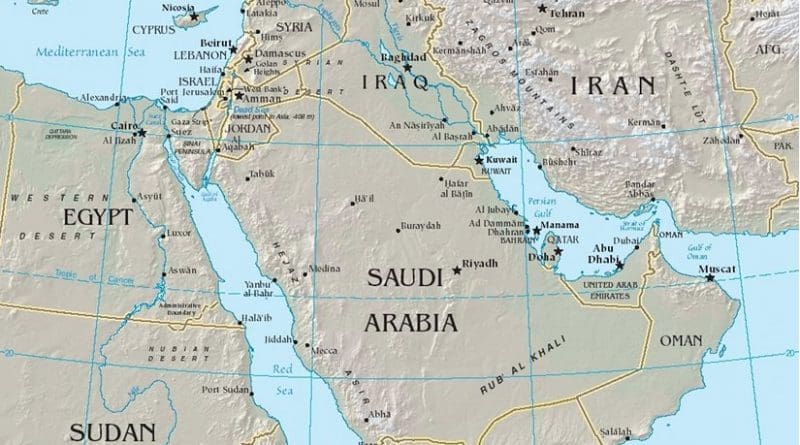Havoc In The Middle East: The Other Side Of The Coin – OpEd
In a number of articles published in Western media in recent years, the Eastern and Southern Mediterranean appear as somehow distant and obscure regions. Yet, what the region is experiencing should not in any way be perceived in these terms, or as someone else’s history. This not (or not only) in light of a relatively distant past, but in consideration of a present that hinders the construction of a sustainable future.
The natural resources (fuel, gold, gas ect) of most of the African countries and a number of the states in the Eastern Mediterranean are siphoned off through offshore companies that, to a large extent, are linked to European and American companies and businessmen. In other words, as the Panama Papers confirmed, tax havens are used to exploit the natural wealth of some of the world’s poorest countries.
Resources are today sucked out of the civilian economy into the military, and here as well Western players continue to play the role of co-protagonists. The equivalent of a billion and 350 million euros in rifles, rocket launchers, heavy machine guns, mortar shells and anti-tank weapons are currently exported from Europe (particularly the Balkans) to the Middle East: a meaningful percentage of them are currently used by terrorist groups operating in Syria and Yemen.
It is noteworthy that German arms exports doubled in 2015: Saudi Arabia and Qatar are two of the major markets. Similar data apply to Britain (Saudi Arabia is UK arms industry’s biggest customer) and a number of other European countries.
The contribution coming from the other side of the Atlantic is no less relevant. In the first six years of the Obama Administration (“The Drone Presidency”), the US entered into agreements to sell more than $190 billion in weaponry worldwide: more than any US administration since World War II.
Washington is responsible for 33% of global arms sales and the Middle East is the primary destination of a large majority of U.S.-made weapons (with Saudi Arabia and United Arab Emirates topping the list and Iraq and Egypt making the top ten). Particularly devastating have been the effects of the bombs (a huge number are made in Italy) and missiles provided to the Saudis for their war in Yemen, where more than 370,000 children are currently at risk of starvation.
Unsurprisingly, weapons’ export to the region is often justified using a “defensive rhetoric”. Echoing an increasingly common opinion, political scientist Avery Plaw contended for instance that “drone strikes save lives, American and other”.
While it is true that quantitative data available on armed drones and other weapons is still not yet sufficient to make any definitive pronouncements, a number of studies have shown that a relevant percentage – in some cases about 90 percent – of the extrajudicial killings carry out in some areas of countries such as Afghanistan, Pakistan, Yemen, and Somalia, is composed by civilians (“collateral murder”). Only at times these attacks are carried out with the prior consent of host countries or the UN Security Council: very often they infringe both sovereignty and due process.
As noted by Audrey Cronin in Drones and the Future of Armed Conflict, terrorist groups have generally been suppressed not through military interventions, but by detaching and isolating them from their potential communities of support.
The global drone warfare is causing the opposite effect. Those in favor of drones, pointed out Radhya al-Mutawakel, who heads Mwatana, a human rights group based in Sana’a, “praise them as precise and technologically advanced weapons that limit civilian harm. We, Yemenis, disagree. Drones do not bring peace or security. They bring death, destruction, suffering, lives lost and irreparably changed for generations”.
In this context it should be added that the content of several studies on the use of weapons – such as armed drones – carried out by some leading international think tanks, including the Brookings Institution in Washington, have been strongly influenced by donors’ agendas.
In a comparative perspective that takes into account the region’s past, did massive military supplies help to stabilize the region? Did it provide any sort of positive effect to the region?
One of the most meaningful possible answers can be found in the data provided by the US State Department, according to which “incidents of terrorism” increased 6500% since the “war on terror” began in 2001: half of them have been registered in Afghanistan and Iraq, whose destabilization has had a sort of earthquake effect on the all region.
Too often “we” tend to approach the dramatic present of the Eastern and Southern Mediterranean as something that pertains peoples and countries that are largely detached from their political, historical and economic past and present.
This mindset is often part of an ongoing medievalization of the region, or the tendency to juxtapose an allegedly medieval Middle East to a modern, secular, normative West.
It is necessary to overcome this segregated interpretation of “our history” and “their history”, paving the way for a more humble approach toward the peoples’ region and their sufferance.
*Lorenzo Kamel is Marie Curie Experienced Researcher at the Freiburg Institute for Advanced Studies (FRIAS) and a Senior Fellow at the Istituto Affari Internazionali (IAI).


First they provide them an enormous quantity of weapons and take much of their natural resources, then they complain for the “Refugees”. The world is upside down. I also read an interesting article on the growing market in the illegal trade of guns and weapons in Libya via social media sites, in particular Facebook